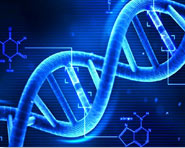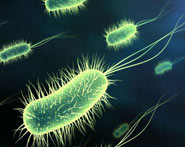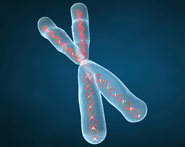


 النبات
النبات
 الحيوان
الحيوان
 الأحياء المجهرية
الأحياء المجهرية
 علم الأمراض
علم الأمراض
 التقانة الإحيائية
التقانة الإحيائية
 التقنية الحيوية المكروبية
التقنية الحيوية المكروبية
 التقنية الحياتية النانوية
التقنية الحياتية النانوية
 علم الأجنة
علم الأجنة
 الأحياء الجزيئي
الأحياء الجزيئي
 علم وظائف الأعضاء
علم وظائف الأعضاء
 الغدد
الغدد
 المضادات الحيوية
المضادات الحيوية|
Read More
Date: 2025-01-23
Date: 25-12-2020
Date: 2025-03-27
|
In 1937, Max Theiler, a Professor of Epidemiology and Public Health, developed the first live-attenuated vaccine (LAV). He passed the virulent Yellow Fever virus many times through laboratory mice until it no longer caused disease in humans but could induce immunity (Frierson, 2010). LAVs have weakened (mutated) copies of the original pathogen, which means that they simulate an attenuated version of the natural infection. As LAVs are able to replicate in humans, they stimulate all arms of the immune system, and thus induce strong, long lasting antibody, and cell-mediated responses (Clem, 2011). Live viral vectors that are not able to replicate in humans are also used as vaccine delivery systems. As few as one or two doses of LAV can confer a lifetime protection against the disease-causing pathogen. Due to smaller genome sizes, it is easier to attenuate viruses than bacteria (Clem, 2011). Other examples of LAV include the Measles, Mumps, and Rubella (MMR) combined vaccine, Chickenpox, Rotavirus, and Smallpox vaccines.
The LAV approach remains an important means of combating many viral infections. In the 20th century, large-scale vaccination programs with LAV recorded a remarkable improvement in human and animal health (Pandey et al., 2016). The successful eradication of smallpox, polio, and measles in many parts of the world is largely due to the success of LAV. While the approach has worked well against acute viral infections, it has improved less effective with chronic infections; an example of a LAV for chronic infections is the BCG vaccine for TB, which is partially effective (Minor, 2015). A major limitation of LAVS is the fact that refrigeration is required to maintain vaccine potency. This storage issue constitutes a formidable logistic challenge in mass vaccination campaigns in rural African communities that lack electricity (Dairo & Osizimete, 2016).
In addition, LAVS contain live, replication competent pathogens and can therefore not be administered to individuals with compromised immune systems. Such individuals include patients with an organ transplant, chronic illnesses, and immunodeficiencies. LAVs have the potential of reverting back to their original virulent form and can trigger the actual disease, for example, some polio cases are caused by the attenuated vaccine (albeit at a low frequency, in fewer than one in a million vaccinated children) (Arvas, 2014). Though there are safety concerns, LAVs are more effective than inactivated vaccines. For example, in young chickens, a single dose of live-attenuated influenza vaccine provided stronger innate and mucosal IgA protection than a single dose of influenza inactivated vaccine (Jang et al., 2018). LAVS elicit strong humoral and cell- mediated immunity; hence, adjuvants are not required. Because the whole pathogen is used, LAVS contain naturally occurring immunopotentiating molecules (Karch & Burkhard, 2016).
The objective of attenuation is to inhibit pathogen replication in the host cells to some degree, so that they evoke a strong immune response but do not cause disease. This can be achieved either by classical or targeted attenuation. The classical attenuation of live pathogens (mostly viruses) is achieved by passing them multiple times through cultured cells or live animals which are not the target species for the vaccine. Targeted attenuation involves the use of genetic engineering approaches such as deletion or mutation of genes that are responsible for replication and assembly, altered replication fidelity, codon deoptimization, RNA interference, or zinc finger nuclease control (Lauring et al., 2010). However, as with the classical approach to attenuation, the major challenge with targeted attenuation is that live-attenuated viruses can revert back to virulence through mutation and recombination (Hanley, 2011).
References :
-------------
1- Frierson, J. G. (2010). The yellow fever vaccine: A history. The Yale Journal of Biology and Medicine, 83(2), 77 85. Available from 20589188, PMCID: PMC2892770.
2- Clem, A. S. (2011). Fundamentals of vaccine immunology. Journal of Global Infectious Diseases., 3(1), 73 78. Available from https://doi.org/10.4103/0974-777X.77299. Available from 21572612, PMCID: PMC3068582.
3- Pandey, A., Cabello, A., Akoolo, L., Rice-Ficht, A., Arenas-Gamboa, A., McMurray, D., Ficht, T. A., & de Figueiredo, P. (2016). The case for live attenuated vaccines against the neglected zoonotic diseases brucellosis and bovine tuberculosis. PLoS Neglected Tropical Diseases, 10(8), e0004572. Available from https://doi.org/10.1371/journal.pntd.0004572. Available from 27537413, PMCID: PMC4990199.
4- Minor, P. D. (2015). Live attenuated vaccines: Historical successes and current challenges. Virology, 479-480, 379 392. Available from https://doi.org/10.1016/j.virol.2015.03.032, Epub 2015 Apr 8. Available from 25864107.
5- Dairo, D. M., & Osizimete, O. E. (2016). Factors affecting vaccine handling and storage prac tices among immunization service providers in Ibadan, Oyo State, Nigeria. African Health Sciences, 16(2), 576 583. Available from https://doi.org/10.4314/ahs.v16i2.27. Available from 27605974, PMCID: PMC4994548.
6- Arvas, A. (2014). Vaccination in patients with immunosuppression. Turkish Archives of Pediatrics., 49(3), 181 185. Available from https://doi.org/10.5152/tpa.2014.2206. Available from 26078660, PMCID: PMC4462293.
7- Jang, H., Elaish, M., Kc, M., Abundo, M. C., Ghorbani, A., Ngunjiri, J. M., & Lee, C. W. (2018). Efficacy and synergy of live-attenuated and inactivated influenza vaccines in young chickens. PLoS One, 13(4), e0195285. Available from https://doi.org/10.1371/journal. pone.0195285. Available from 29624615, PMCID: PMC5889186.
8- Karch, C. P., & Burkhard, P. (2016). Vaccine technologies: From whole organisms to rationally designed protein assemblies. Biochemical Pharmacology, 120,1 14. Available from https:// doi.org/10.1016/j.bcp.2016.05.001, Epub 2016 May 6. Available from 27157411.
9- Lauring, A. S., Jones, J. O., & Andino, R. (2010). Rationalizing the development of live attenu ated virus vaccines. Nature Biotechnology, 28(6), 573 579. Available from https://doi.org/ 10.1038/nbt.1635, Epub 2010 Jun 7. Available from 20531338.
10- Hanley, K. A. (2011). The double-edged sword: How evolution can make or break a live attenuated virus vaccine. Evolution (N Y)., 4(4), 635 643. Available from https://doi.org/ 10.1007/s12052-011-0365-y. Available from 22468165, PMCID: PMC3314307.



|
|
|
|
للعاملين في الليل.. حيلة صحية تجنبكم خطر هذا النوع من العمل
|
|
|
|
|
|
|
"ناسا" تحتفي برائد الفضاء السوفياتي يوري غاغارين
|
|
|
|
|
|
|
المجمع العلمي يقيم ورشة تطويرية ودورة قرآنية في النجف والديوانية
|
|
|